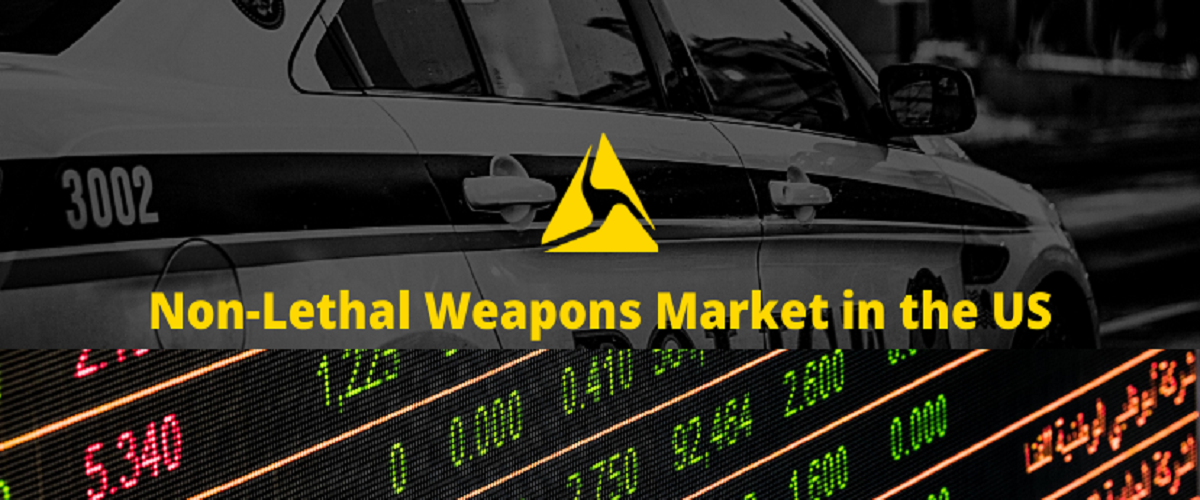In 2019, there were 697,195 full-time law enforcement officers employed in the United States. The presence of such a headcount presupposes the need for the officers’ equipment, including the provision of weapons for those exposed to dangerous situations.
While there is limited information on how much public money is spent on weapons only, according to the US Census of Governments, state, and local governments spent USD 115 billion on police in 2017. Traditionally, federal grants account for a very small share of these expenditures due to America’s emphasis on state and local government autonomy from the federal government. Nevertheless, there is substantial federal spending on criminal justice. For example, the federal government directly spent USD 29 billion on police, USD 7 billion on corrections, and USD 115 billion on courts in 2016.
George Floyd’s murder by a police officer in May 2020 sparked global protests against police brutality and institutional racism that often morphed into violent street outbursts. Both Floyd’s death and the instances of civil unrest that ensued, have led US law enforcement agencies to reexamine the ways in which they deal with acts of civil disobedience.
One upshot from the calls for the elimination of police brutality has been the government authorities’ increased willingness to consider using more non-lethal weapons in their operations.
These may be used as a less dangerous alternative to firearms, in order to reduce the risk of harm to members of the public and to criminal suspects, or in situations where some degree of force is necessary but where the use of firearms would be disproportionate.
The discussed events have fueled the expectations that the market for non-lethal weapons will grow throughout the 2020s. Reportlinker.com envisages that it will reach almost USD 12 billion globally by 2027, growing at a CAGR of 6.8% in the 2020-2027 period. Law enforcement, in particular, is projected to reach USD 10.4 billion, with its CAGR estimated to grow at 7.5%. Unsurprisingly, the US is the global leader in the non-lethal weapons market. The sector there is currently estimated to be USD 2.2 billion, amounting to a share of almost 30% (ReportLinker, 2020).
The Big Players
The leading names in the American market include Lamperd Inc., Pepperball Technologies Inc. (UTS United Tactical Systems LLC), Genasys Inc., Taser International (Axon Enterprise Inc.), and Safariland LLC. According to Mordor Intelligence’s report, all of these are expected to occupy significant market shares during the 2021-2026 period (Mordor Intelligence, 2021).
A brief examination of the year-on-year growth of two of the aforementioned companies - Axon Enterprise (NASDAQ:AXON) and Genasys (NASDAQ:GNSS) - affirms that the producers of non-lethal weapons are on the rise.
First, Axon Enterprise, whose recent successes we covered in two of our previous articles, (links) has been growing steadily over the last three years. The developer of non-lethal technology and equipment, famous mainly for the Tasers, has recorded impressive results as of late. In 2018, Axon announced annual revenue of USD 420 million, up 22% compared to the previous year. A year on, the company passed the USD 500 million marks, registering revenue of USD 531 million, or a 21% growth rate.
Similarly, Genasys, whose most prominent range includes acoustic hailing devices, has registered impressive results. In terms of pure size of revenue, the company cannot match Axon’s results, but its growth is nonetheless catching the eye. A 23% increase to reach a revenue of USD 26.3 million in 2018 and a further 28% growth the following year demonstrate that Genasys is enjoying a bright and busy spell in its history. More importantly, though, the year-on-year revenue growth is a testament to the interest its non-lethal products generate.
The Bottom Line
The summer of 2020 was marked by social unrest whose magnitude may well change the landscape of the weapons market in the US. As shown above, non-lethal weapons manufacturers are already experiencing significant growth in revenue, with their products being increasingly viewed as a viable alternative to firearms when it comes to handling protesters and criminal suspects.
This, coupled with the predictions for the growth of the non-lethal weapons market cited above, leads TenderAlpha.com to believe that more government contracts will be launched across the US in the years to come.
Through our database, we offer our customers access to every tender in the law enforcement sector for the last ten years. It is, therefore, a useful tool to monitor how requirements develop and it delivers timely information about current and upcoming contracts. Don’t hesitate to give it a try and book your demo now!
This article was written by members of TenderAlpha's team and does not serve as a recommendation to buy any stock. TenderAlpha is not receiving compensation for it and we have no business relationship with any of the companies mentioned in the article.
